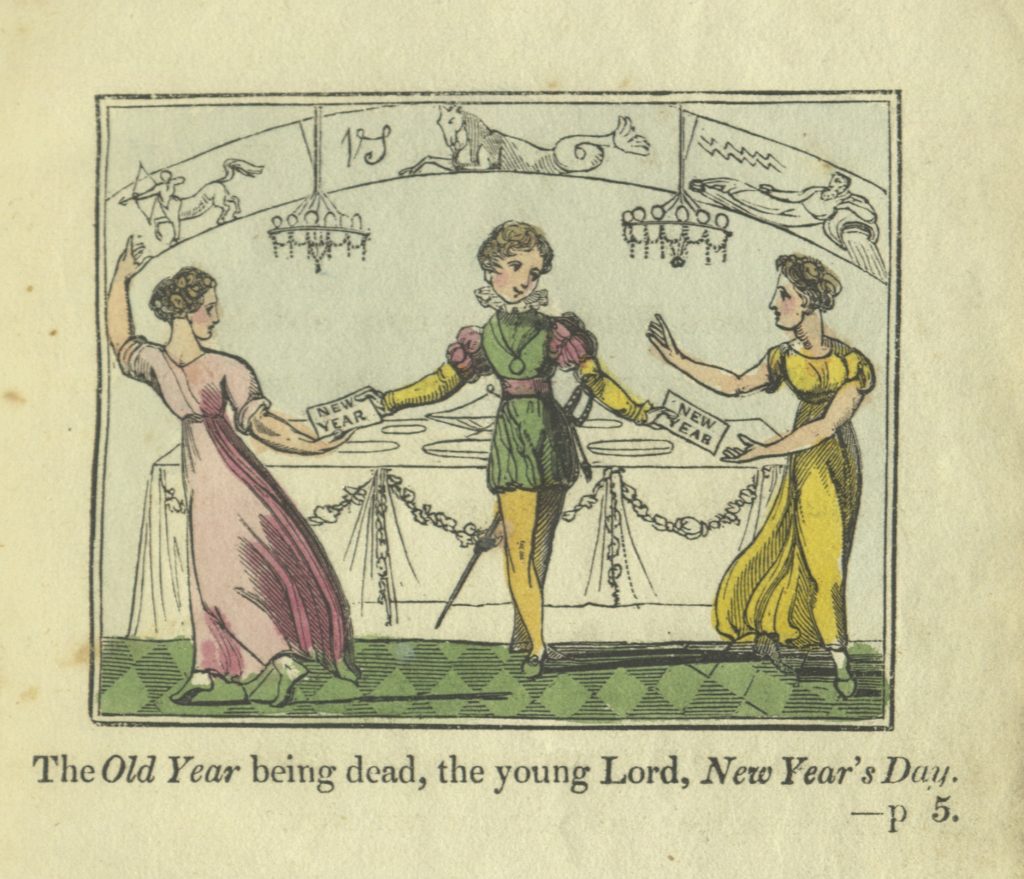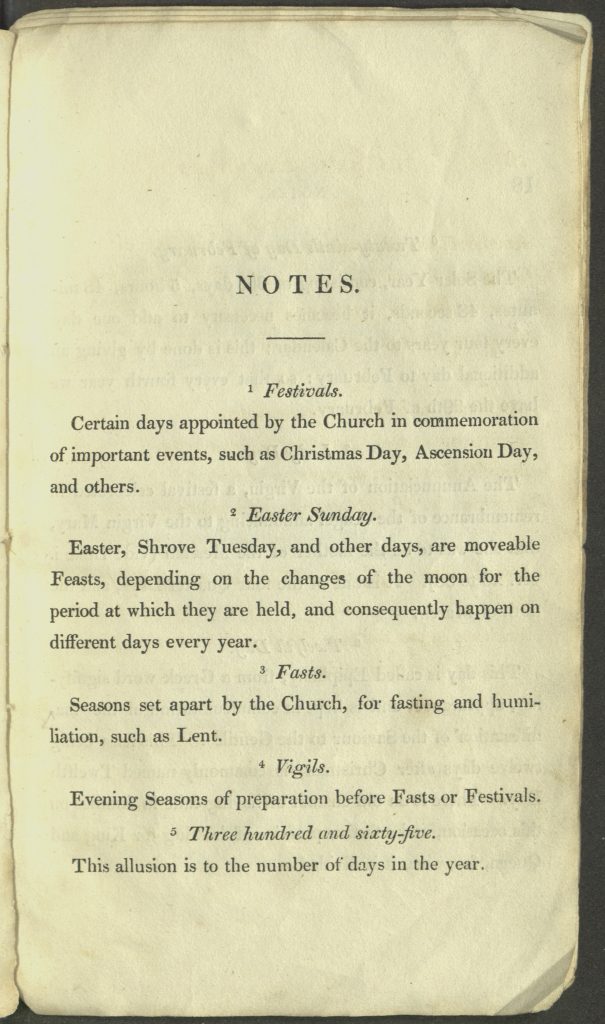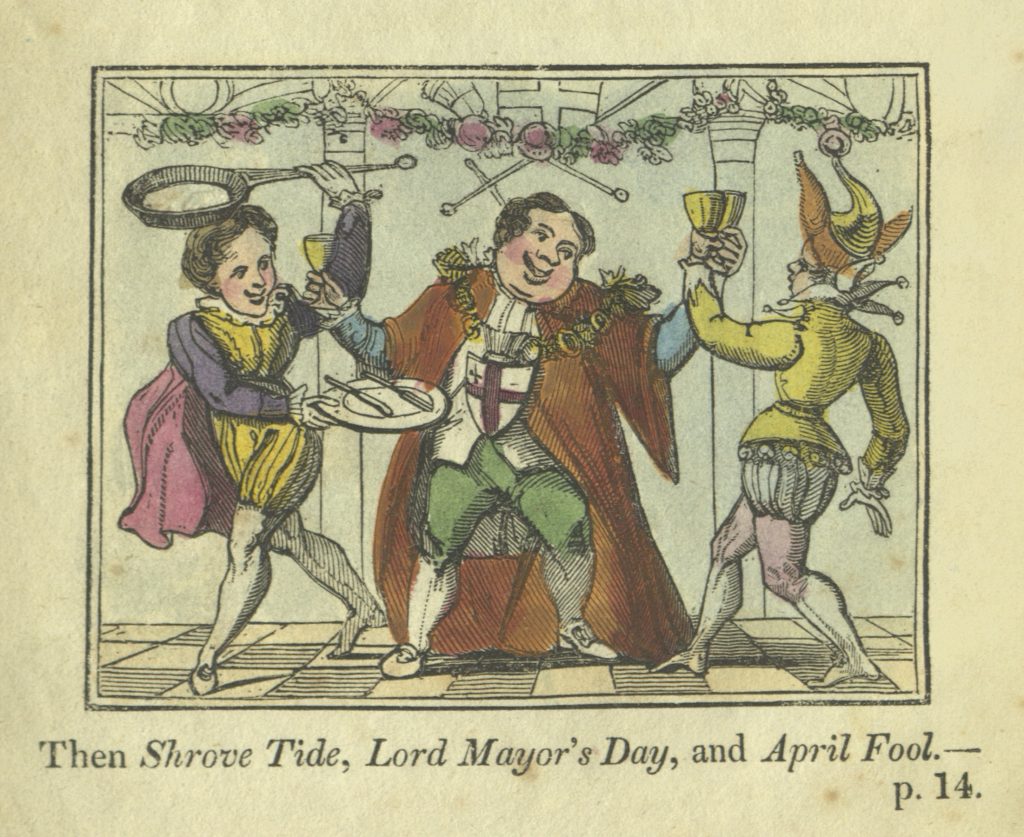In January 1823 the London Magazine published Charles Lamb‘s humorous three-page essay “Rejoicing Upon the New Year’s Coming of Age.” It imagined the feast given by the New Year, and attended by 365 guests: April’s Fool, May Day, Christmas, Lord Mayor’s Day, and all the rest. By 1824, Lamb had recast his work as a poem for children, and it was printed with six pages of engravings as The New Year’s Feast on His Coming of Age. In honor of the holidays, we are sharing the copy that come to the Library as part of the Ellery Yale Wood Collection of Children’s Books and Young Adult Literature. It begins:
The Old Year being dead, the young Lord, New Year’s Day,
Determined on giving, for once and away,
A treat to his friends; and that none might be slighted,
All the days in the year to the Feast were invited.
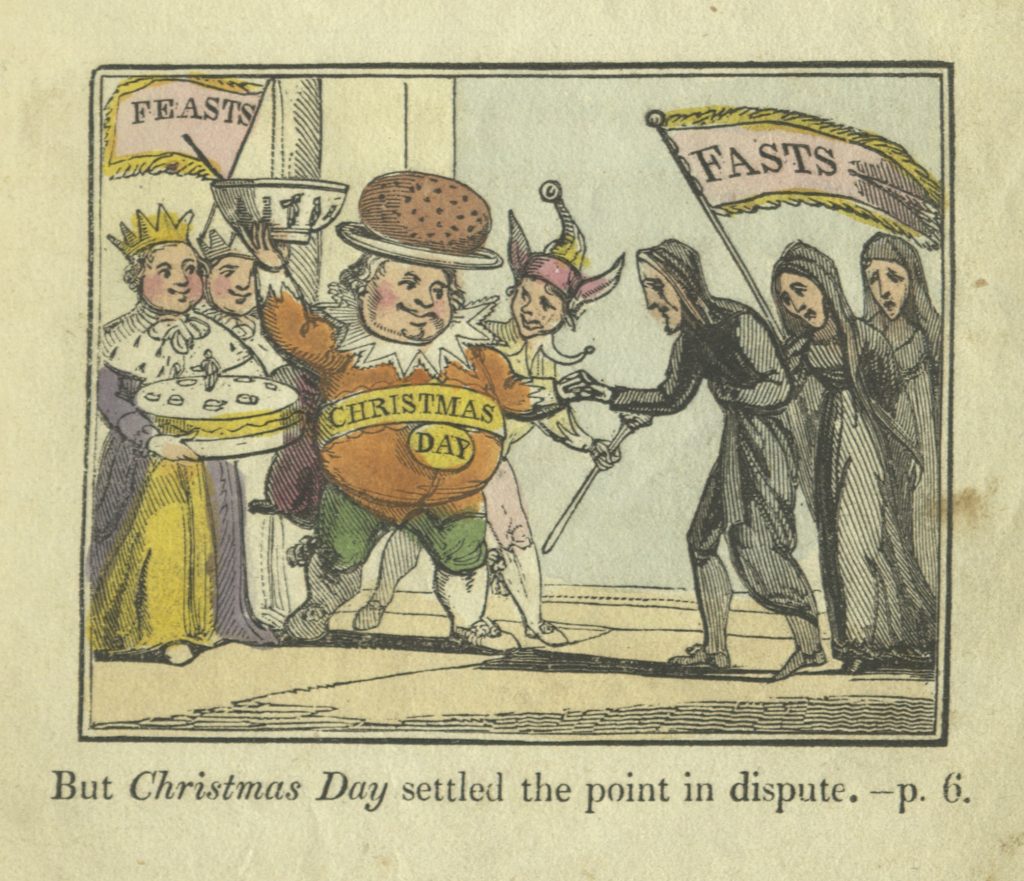 After some squabbling about whether the sad, depressing fast days should be included, Christmas Day prevails and they are invited. It turns out Christmas is not just being kind – he intends to get Ash Wednesday drunk and see what happens.
After some squabbling about whether the sad, depressing fast days should be included, Christmas Day prevails and they are invited. It turns out Christmas is not just being kind – he intends to get Ash Wednesday drunk and see what happens.
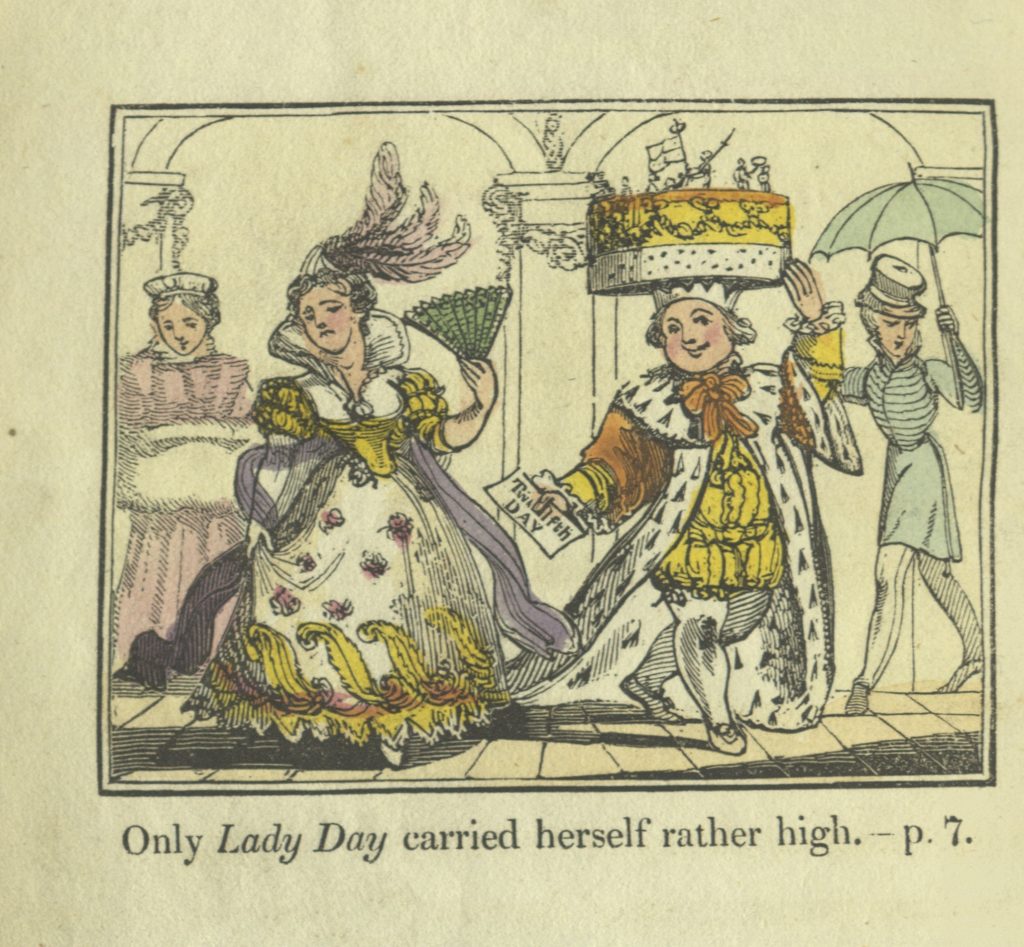 Twelfth Day (usually called Twelfth Night) is the epitome of style, and May Day and St. Valentine cozy up on a sofa.
Twelfth Day (usually called Twelfth Night) is the epitome of style, and May Day and St. Valentine cozy up on a sofa.
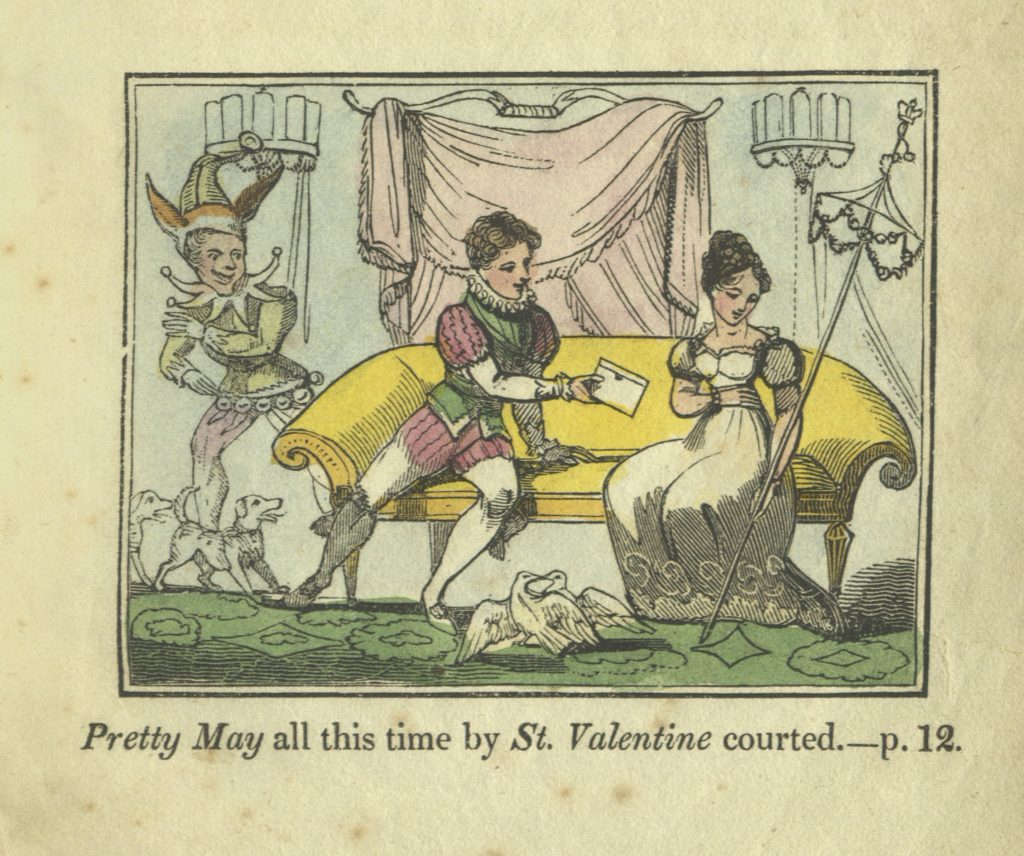 New Year’s speech of welcome is rudely interrupted by November 5 (the anniversary of the discovery of the Gunpowder Plot, Bonfire Day), and the guests take it upon themselves to kick the malcontent out into the street.
New Year’s speech of welcome is rudely interrupted by November 5 (the anniversary of the discovery of the Gunpowder Plot, Bonfire Day), and the guests take it upon themselves to kick the malcontent out into the street.
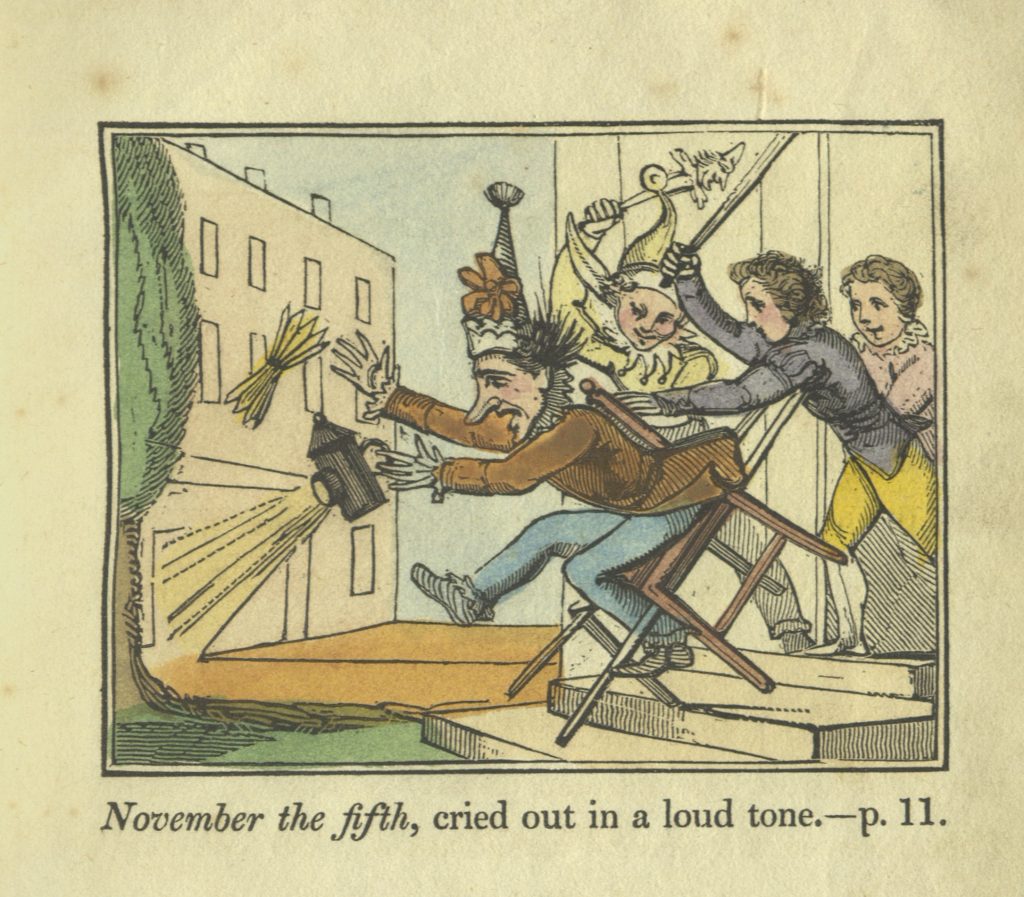 April Fool, who appears in many of these engravings, serves as chief jester and master of ceremonies for the feast. He seats the distant solstices together at the table:
April Fool, who appears in many of these engravings, serves as chief jester and master of ceremonies for the feast. He seats the distant solstices together at the table:
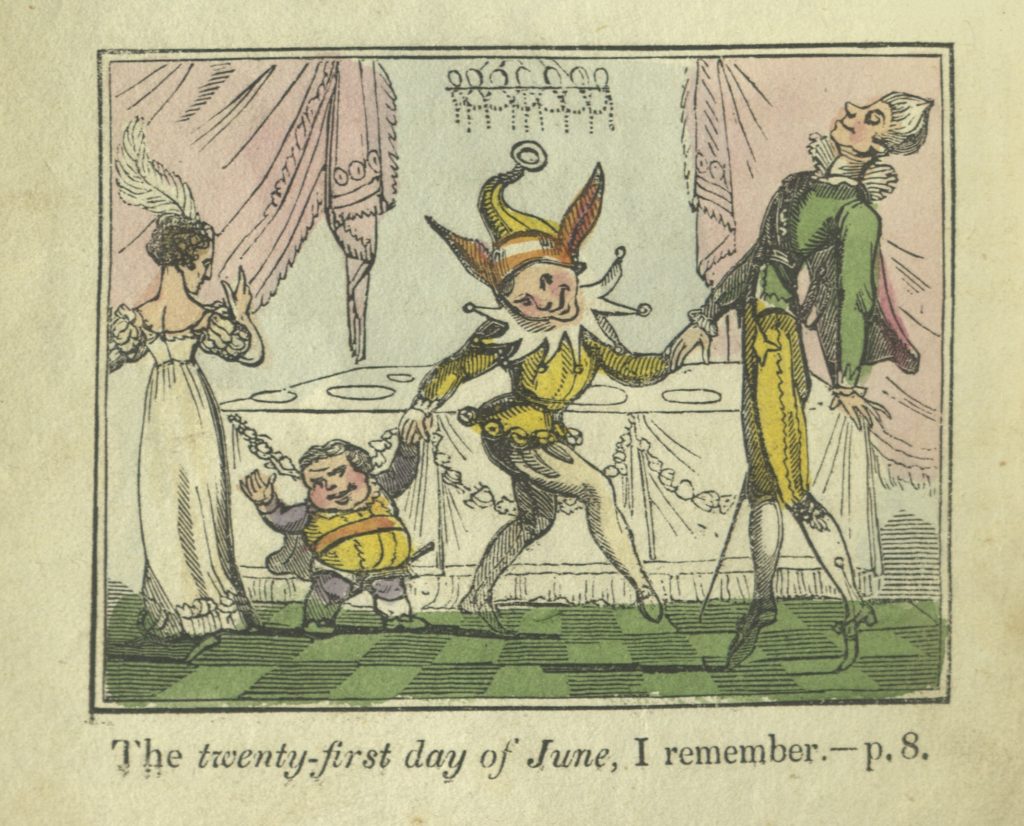 The twenty-first day of June, I remember,
The twenty-first day of June, I remember,
He sat next the twenty-first day of December;
The former the latter contemptuously eyed,
Like a May-pole a[nd] marrow-bone placed side by side.
Fortunately for the modern reader, an appendix is provided “designed to assist the juvenile capacity in understanding the allusions in the Poem.” These notes explain, for example, why August the Twelfth and St. George’s Day quarrel over who is to propose the King’s health – George IV’s birthday had come to be celebrated not on his natal day, but on St. George’s feast day, April 23. Other notes are equally useful, explaining Quarter Days, Ember Days, Rogation Day, Septuagesima, and the Greek Kalends (which turn out not to exist).
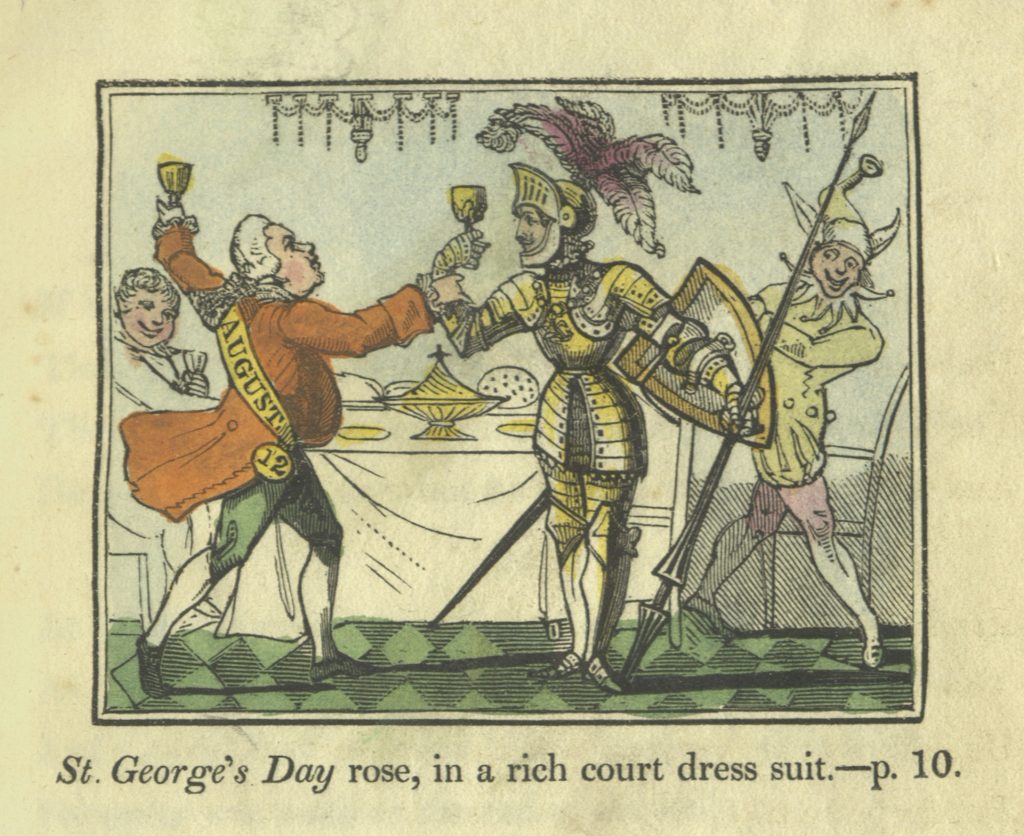 Once Christmas has plied Ash Wednesday with wassail, both entertain the company with song.
Once Christmas has plied Ash Wednesday with wassail, both entertain the company with song.
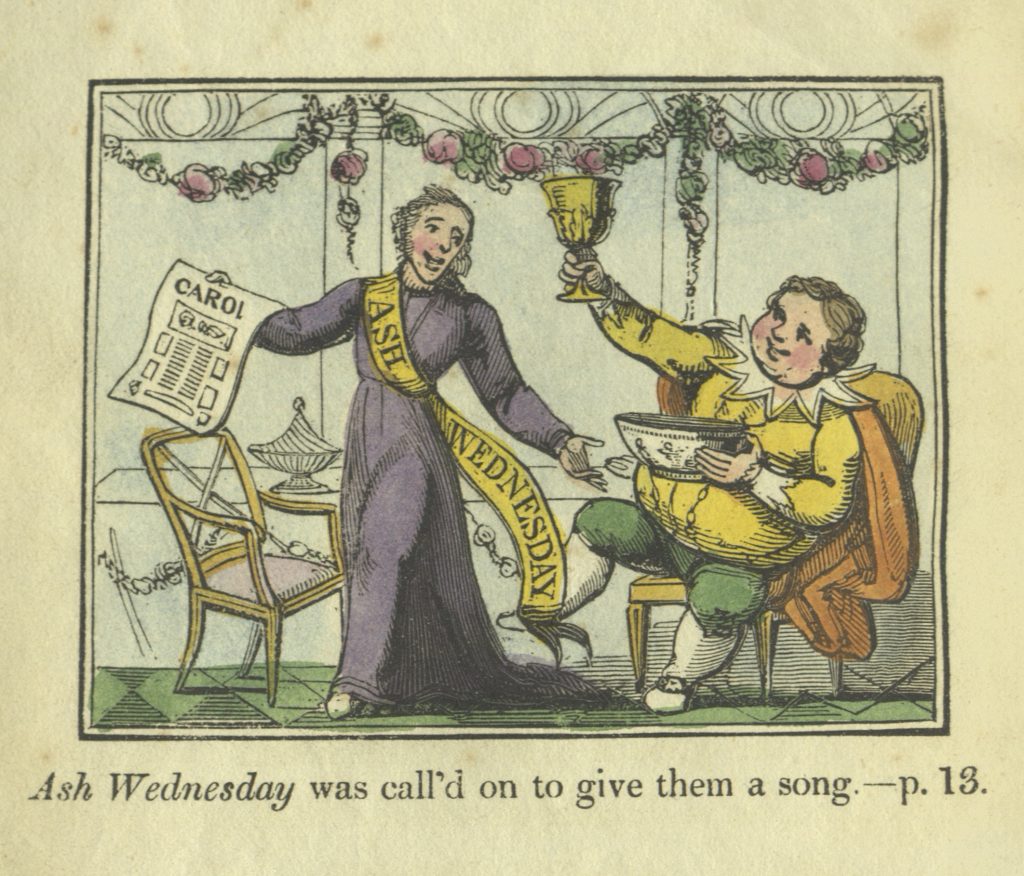 Music and conversation follow, and after further revels, the guests depart for their homes. Watchmen (the Vigils) accompany those who needed assistance.
Music and conversation follow, and after further revels, the guests depart for their homes. Watchmen (the Vigils) accompany those who needed assistance.
Another old Vigil, a stout-made patrol.
Called the Eve of St. Christopher’s, jolly old soul,
Perceiving Ash Wednesday inclining to roam,
Took him up on his shoulders and carried him home.
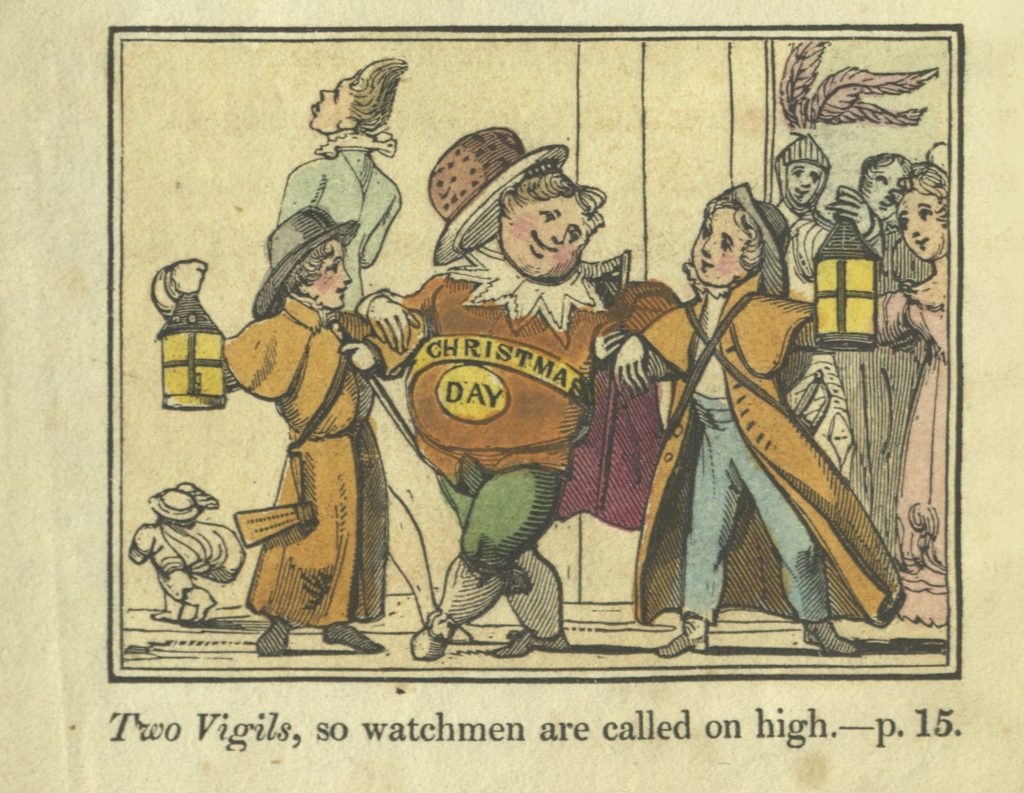 You can read the book for yourself (and find out what Christmas and Ash Wednesday sang, and who went scandalously home with whom) on the Internet Archive. We have digitized our handsome, hand-colored copy, and loaded it into this vast public library at https://archive.org/details/NewYearsFeastOnHisComingOfAge1824. The original essay is also available at https://archive.org/details/londonmagazine11taylgoog/page/n16.
You can read the book for yourself (and find out what Christmas and Ash Wednesday sang, and who went scandalously home with whom) on the Internet Archive. We have digitized our handsome, hand-colored copy, and loaded it into this vast public library at https://archive.org/details/NewYearsFeastOnHisComingOfAge1824. The original essay is also available at https://archive.org/details/londonmagazine11taylgoog/page/n16.
We wish you and yours the happiest of holidays and a very happy, healthy new year!

